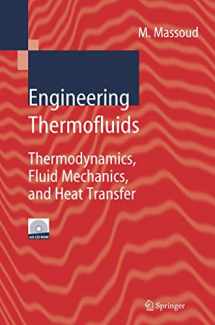
Engineering Thermofluids: Thermodynamics, Fluid Mechanics, and Heat Transfer
Book details
Summary
Description
Thermofluids, while a relatively modern term, is applied to the well-established field of thermal sciences, which is comprised of various intertwined disciplines. Thus mass, momentum, and heat transfer constitute the fundamentals of th- mofluids. This book discusses thermofluids in the context of thermodynamics, single- and two-phase flow, as well as heat transfer associated with single- and two-phase flows. Traditionally, the field of thermal sciences is taught in univer- ties by requiring students to study engineering thermodynamics, fluid mechanics, and heat transfer, in that order. In graduate school, these topics are discussed at more advanced levels. In recent years, however, there have been attempts to in- grate these topics through a unified approach. This approach makes sense as thermal design of widely varied systems ranging from hair dryers to semicond- tor chips to jet engines to nuclear power plants is based on the conservation eq- tions of mass, momentum, angular momentum, energy, and the second law of thermodynamics. While integrating these topics has recently gained popularity, it is hardly a new approach. For example, Bird, Stewart, and Lightfoot in Transport Phenomena, Rohsenow and Choi in Heat, Mass, and Momentum Transfer, El- Wakil, in Nuclear Heat Transport, and Todreas and Kazimi in Nuclear Systems have pursued a similar approach. These books, however, have been designed for advanced graduate level courses. More recently, undergraduate books using an - tegral approach are appearing.


We would LOVE it if you could help us and other readers by reviewing the book
Book review



